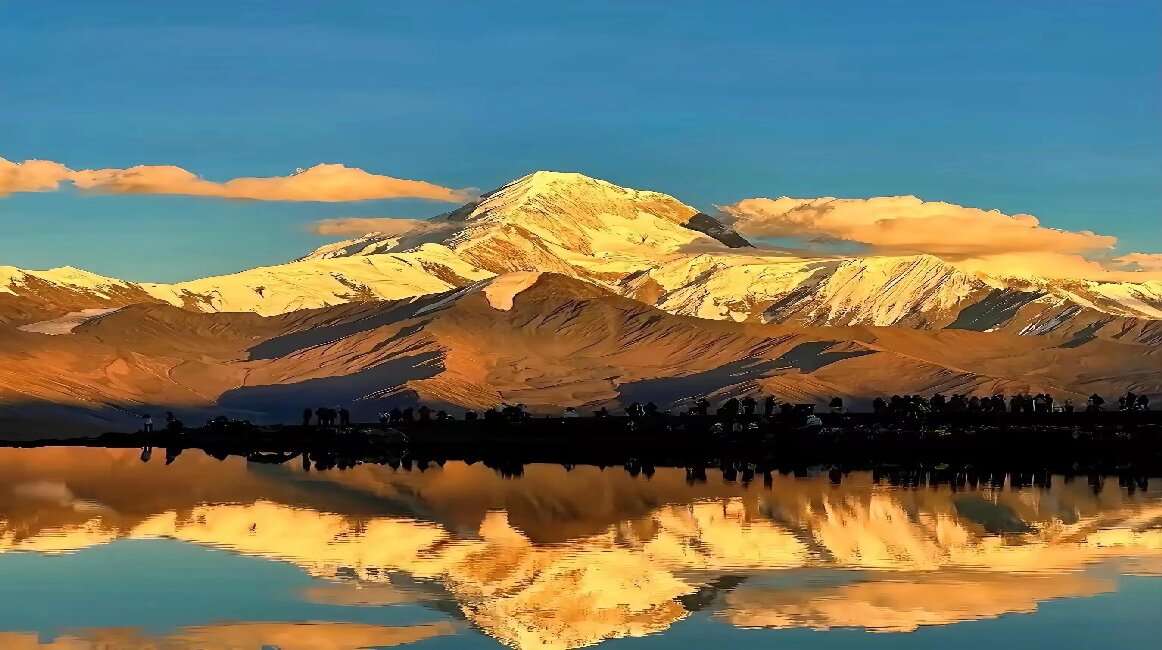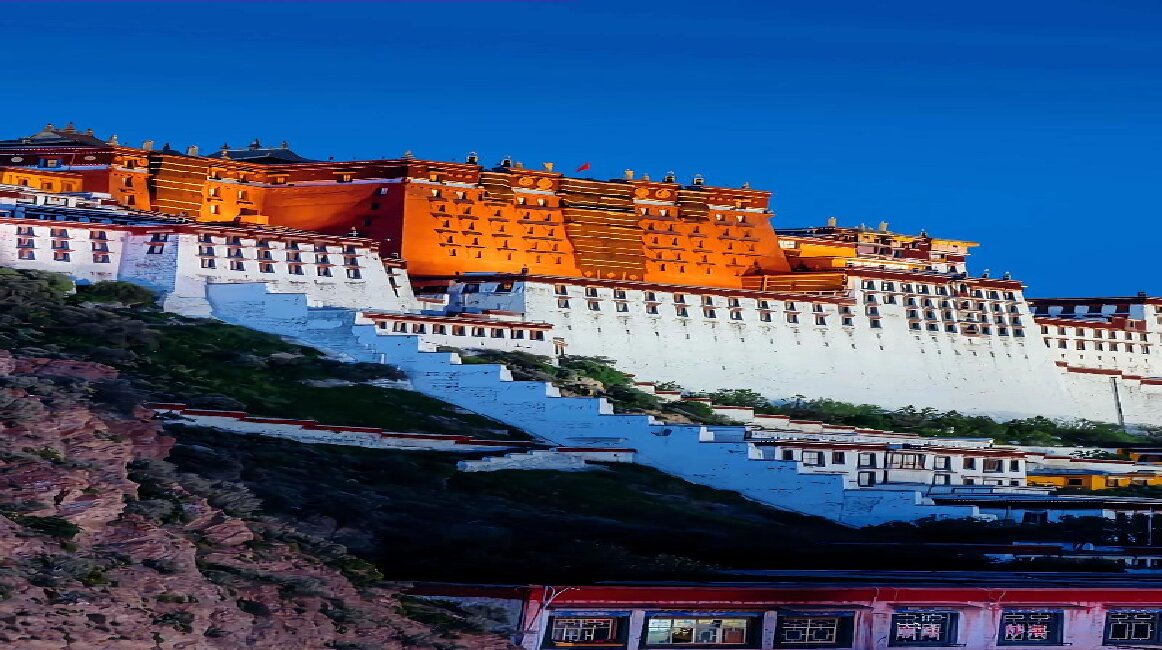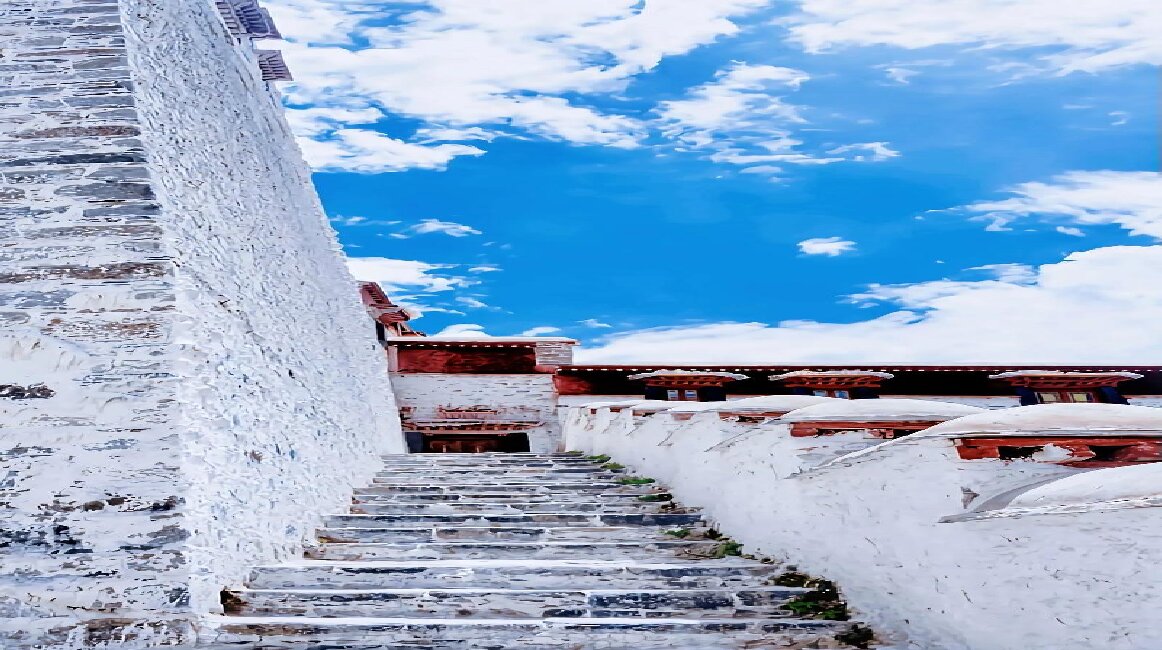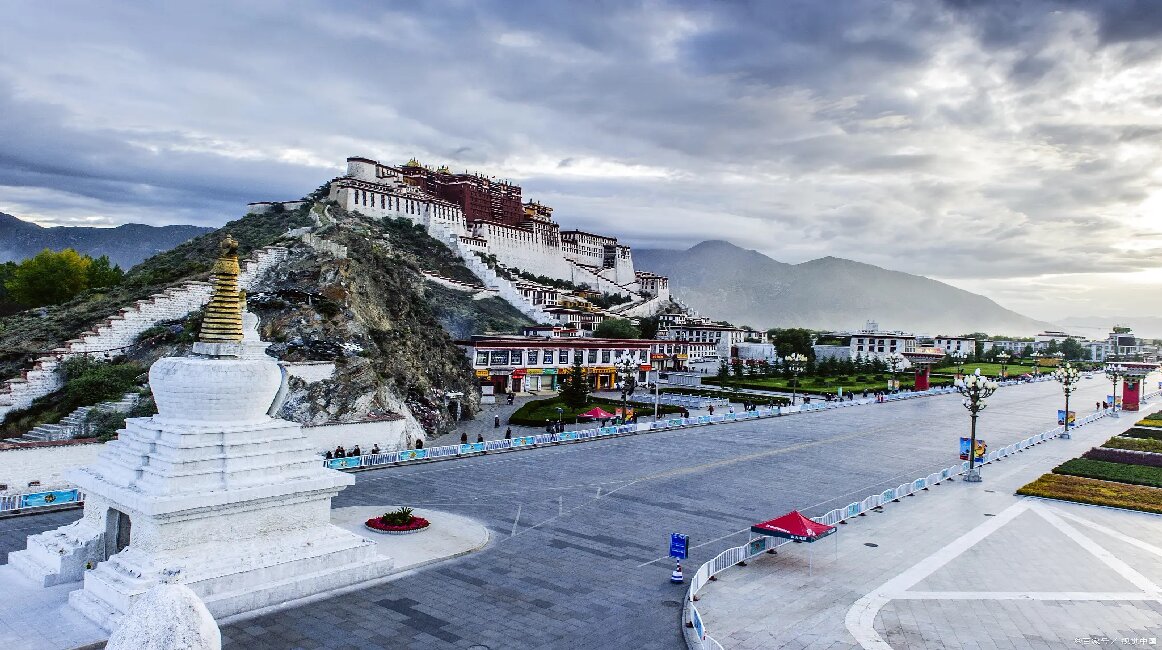Nestled atop the Red Hill in Lhasa, the Potala Palace stands as a monumental tapestry of Tibetan culture and breathtaking scenery. This architectural marvel, once the winter residence of the Dalai Lama, soars 12,139 feet above sea level, making it the highest palace in the world. Its origins trace back to a love story, commissioned by King Songtsen Gampo for his marriage to Princess Wencheng of the Tang Dynasty. Over the centuries, it has evolved from a symbol of matrimonial unity to a spiritual sanctuary and a repository of Tibetan Buddhism.


The Potala Palace is a harmonious blend of religion and politics, where every corner tells a story of devotion and governance. The Red Palace and the White Palace, distinct in their purpose and hue, encapsulate the duality of spiritual and temporal power. The Red Palace, with its deep crimson walls, houses the tombs of past Dalai Lamas and numerous sacred shrines, while the White Palace served as the administrative hub, its walls painted with a mixture of milk, honey, and sugar each autumn.
Within its thousand rooms, the palace holds over 10,000 painted scrolls, 698 murals, and countless statues crafted from precious materials, each narrating a chapter of the rich Tibetan narrative. The Potala Palace is not just a museum of artifacts; it is a living museum of Tibetan culture, where butter lamps continue to illuminate the hallways, and watchful monks maintain the sanctity of this sacred space.
The palace's exterior is equally as compelling as its interior. Its towering structure, against the backdrop of the Himalayas, offers a scenic panorama that is both serene and majestic. The Potala Palace, now a UNESCO World Heritage site, continues to draw thousands of pilgrims and travelers who traverse great distances to experience its spiritual and cultural magnificence.


The Potala Palace's cultural significance extends beyond its physical boundaries. It is a testament to the resilience and continuity of Tibetan culture, standing proud amidst waves of natural and human-induced changes. It remains a beacon of Tibetan identity and spirituality, a place where the past and present converge, and where every visitor can sense the profound depth of Tibet's history and beliefs.



